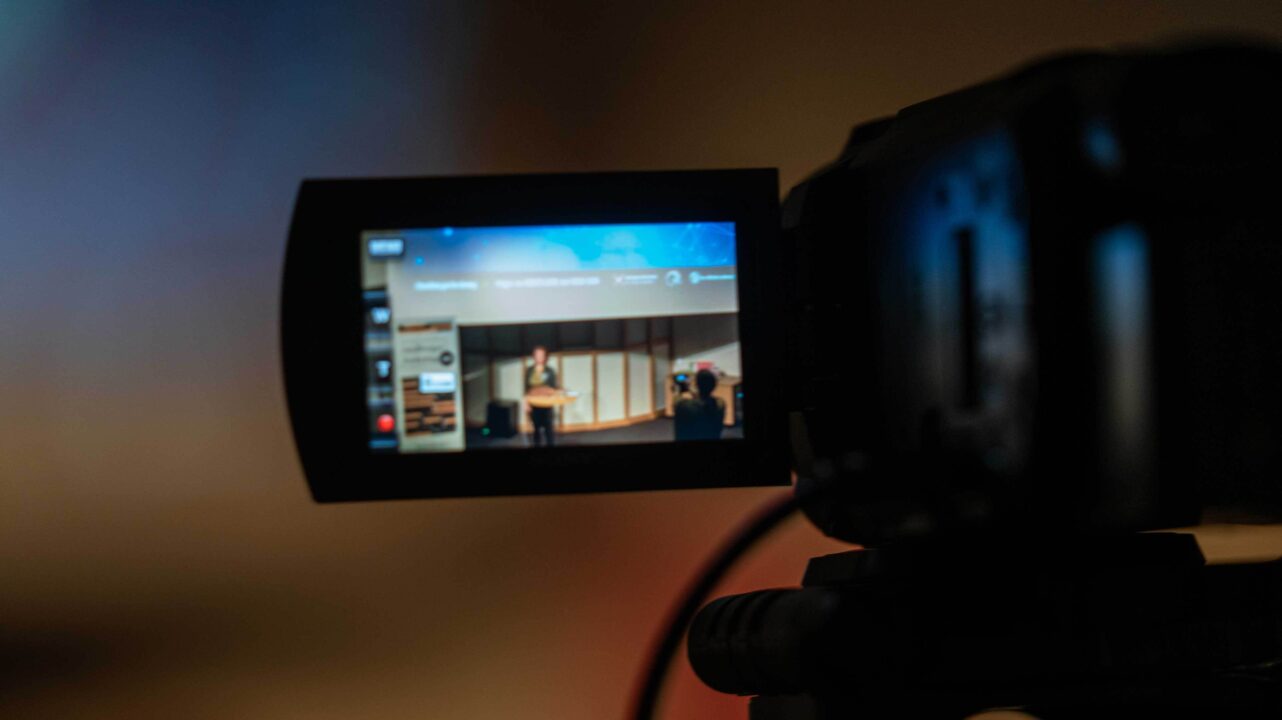At the Euroscience Open Forum in Dublin, VA (Public & Science) organised a well-attended session on the theme of communication between scientists and the public. The conclusions drawn from the session included the need for clear incentives and for scientists to feel that engagement is important in order to be willing to engage with the public.
The noise level was high as a hundred or so participants explained to others seated at their table why they had decided to attend the 15 July session entitled “How to motivate scientists to engage with the public.”
“I’m a scientist myself and I’m simply wondering ‘What’s in it for me?’” said Tom Arbuckle from the University of Limerick.
Karin Larsdotter of VA (Public & Science) was the first of the four speakers who would help to answer that question. She presented a VA study documenting activities and methods for engagement in six countries. Karin described two levels of engagement – the first mainly involves one-way communication while the second, more desirable one, is based on long-term engagement.
Karin was seeking a holistic approach where proposals from the top are combined with initiatives from the scientists themselves. In addition to measuring and rewarding engagement, VA recommends joint declarations of intent from the main research players regarding encouraging engagement, extra initiatives at universities, scientists being strong role models and national awards for scientists who are excellent communicators.
Giuseppe Pellegrini, a professor at the University of Padova who also works for the Italian organisation Observa, described a study that measured how 40 European physics and biomedicine research institutions are engaging with the public. One indicator is the institutions’ websites which include things like scientists’ e-mail addresses.
One clear result from the study was that there was no correlation between the size of the organisations and the amount of resources invested in engagement. The study concluded that engagement activities are not yet regarded as an integral part of the institutions’ activities.
Sophie Duncan from the National Co-ordinating Centre for Public Engagement in the UK described how efforts to change attitudes to engagement can be summarised in three points: First is establishing what the university wants to convey and embedding engagement in the institution’s mission. Next is involving staff and students and using their expertise to shape the strategy as well as its delivery. Finally, a process is needed to ensure the quality of the engagement process.
Sophie Duncan stressed that engagement is not the same as marketing, and to the scientist’s question “Why should I care?” she responded:
“To inspire and inform, to hear the opinions and ideas of others about your work, and to engage with the public.”
With the three lectures as a starting point, the participants had an opportunity to participate in round table discussions on the issue of how to motivate scientists to engage. Henri Boffin, an astronomer at the European Southern Observatory, said that at first his engagement with the public was based on an obligation – “We are, after all, publicly funded” – but that now he enjoys the exchange. Heather Rea from the Edinburgh Beltane Public Engagement Network described how at her table they had discussed money, but that financial support should not lead to people simply ticking the “engagement” box for the sake of appearances. “Bad engagement is worse than no engagement at all,” she said.
At another table the idea was put forward that if a clear value were linked to engagement, scientists wouldn’t feel that it was competing with “focusing on real science.” Martin Andler of the University of Versailles Saint-Quentin expressed his opinion that universities should have trained staff to assist scientists in communicating with the public. Several of the tables concluded that some form of communication training should be included in postgraduate education.
The fourth speaker of the day was Camilla Modéer who represented Riksbankens Jubileumsfond (an independent foundation that aims to promote and support scientific research) and who has worked on a European study within the framework of the European Science Foundation’s Member Organisation Forum on Science in Society Relationships. One conclusion of the study was that dialogue between scientists and the rest of society is necessary.
“We need the scientific community to be involved and to create processes for engagement, and for communication to be regarded as a merit,” she said.
Miklos Györffi of the European Commission wondered who will develop indicators and ensure that a policy to promote engagement is adhered to. Camilla Modéer’s response was “the research community” and she drew parallels with today’s use of citation indexes to measure research quality.
“These didn’t exist 20 – 30 years ago but they have emerged gradually” she said.
Finally the speakers summarised what they believe to be the most important steps to motivate scientists to engage with the public:
“Scientists want to make a difference. Help them to make a difference by creating a culture that supports them in this,” said Sophie Duncan.
“One way of finding motivation for scientists is to start with the questions members of the public are asking,” said Guiseppe Pellegrini.
“Scientists should be given better incentives, such as financial ones, and we should provide them with training and get them to feel that they are doing a good job when they engage with the public,” said Karin Larsdotter.
Camilla Modéer concluded by adding:
“Everyone needs to feel that this is the most important thing for society!”
Read the participants’ presentations:
Sophie Duncan
Karin Larsdotter
Camilla Modéer
Giuseppe Pellegrini
Text: Lotta Fredholm
Translation: Diane Högsta
Photos: Paul Sherwood

